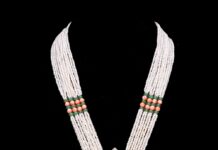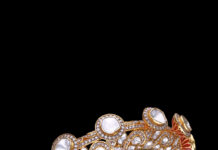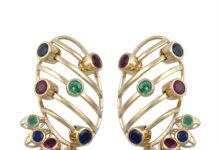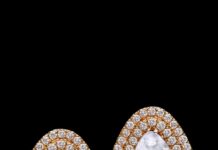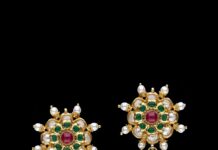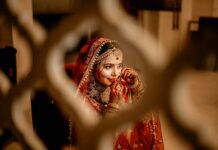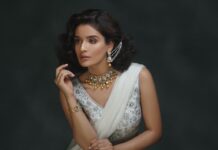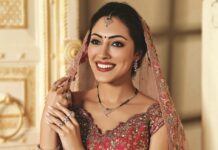When you are enchanted by the shine of silver, when you sense the fragrance of rustic India, when you are charmed by the tribal essence, when you are bedazzled by the supreme aesthetics, know that it’s a magnificent piece from Sangeeta Boochra’s collection.
With great admiration for her brand of jewellery, Jewelpedia interviewed Ms. Boochra who is also the managing director and designer at Sangeeta Boochra (a brand of Silver Centrre), and talked at length about her work that goes beyond just jewellery making and touching many lives by mainstreaming artisans from far and wide.
How and when did you develop an interest in jewellery designing?
I do not have any background in jewellery designing, as I come from a business family that deals in petroleum, oil, and gas. But when in 1985, I got married into the renowned jeweller family of Jaipur, I was encouraged by my father-in-law to join the family business. While my father-in-law was into jewellery making, my husband Suchit Boochra was into gemstones. On my father-in-law’s suggestion, I combined gemstones with jewellery making and created a collection of my own.
That was in 1994. The breakthrough period for the company and me as a designer came only with the launch of my signature style of using gold matt finish in silver jewellery – a technique not so easily achieved at that time. As we received great appreciation for that, in 1999 we went all out for mass production.

Your designs reflect the essence of rural Indian heritage. Shed some light on that.
I regularly travel to various interiors and tribal parts of India and therefore, you can see our cultures reflect in our designs. Sadly, like Europe and western nations, the Archaeological Survey of India has not maintained our monuments, Havelis, palaces, and temples properly. It’s high time we do something to preserve the rare arts of India. Otherwise, future generations will not even get to see this rich art culture of ours.
In our own little way, we all must do our bit in promoting lesser-known arts like textiles, dye work or brocades work, etc., at least in and around us. We travel abroad and pay so much for a museum visit and appreciate it. But show little interest in maintaining the monuments in our own villages which are so artistically carved out.
Other countries take care of their heritage for they realise that’s what they are known for in the world. Despite coming from the oldest civilisation in the world, we do not value it. Even though the government and the industry are creating jewellery parks to increase manufacturing and exports, it is not helping the artisans as they reside in the villages. We should, therefore, work towards rural upliftment.
“We travel abroad and pay so much for a museum visit and appreciate it. But show little interest in maintaining the monuments in our own villages which are so artistically carved out.”
How did you work out your business operations to help artisans living in the villages?
My main motive as a jewellery brand owner is to revive the dying art of India. These art forms are practised in rural India and are passed from one generation to another. Dye-technique, Thapa technique, glasswork, and the carving and engraving are some of the valuable skillsets that needs to be preserved.
But since there is not much awareness about this art and thereby no demand in the market, the next generation is not very keen to continue this family tradition. With only a handful of them, we started working out a plan to involve these artisans in our business of jewellery making. But the challenge here was they lived in villages and could not come to Jaipur.
So we created a program under which we formed a team that travels to their villages and acts as a point of contact between us. Through this arrangement, even women in the village could participate actively. Note that, since their skills are rare, it helps us churn out some of the unique designs.

“My main motive as a jewellery brand owner is to revive the dying art of India. These art forms are practised in rural India and are passed from one generation to another.”
How do you educate clients about such rare arts and artisans?
In our stores, when we do jewellery shows or promotional events, we invite some of the artisans who work for us. At such events, we arrange a live demo of jewellery making where these artisans make jewellery right in front of our clients, and something as intricate as Meenakari designs from Rajasthan too have been created in such events, much to onlookers’ surprise. With shows like these, clients come to know who are these artisans, their aptitude, and their importance in the business.
Tell us more about your jewellery stores.
Presently, we have 42 stores across India, besides three factories, one design studio, and the flagship store in Jaipur that was started in 1897. But you can trace back our journey to 1897, when my great grandfather-in-law Seth Kistoor Chand Boochra started a bullion trading company that dealt in raw bullion of silver. He was regarded as the Silver King of India at that time. Later in 1926, he went on to form the Bullion Association in Jaipur of which we continue to be part of as promoters.
But when in 1964 Morarji Desai’s government banned the trading of silver bullions in India, my father-in-law Seth Lalit Kumar Boochra converted the bullion trading business into a jewellery business.
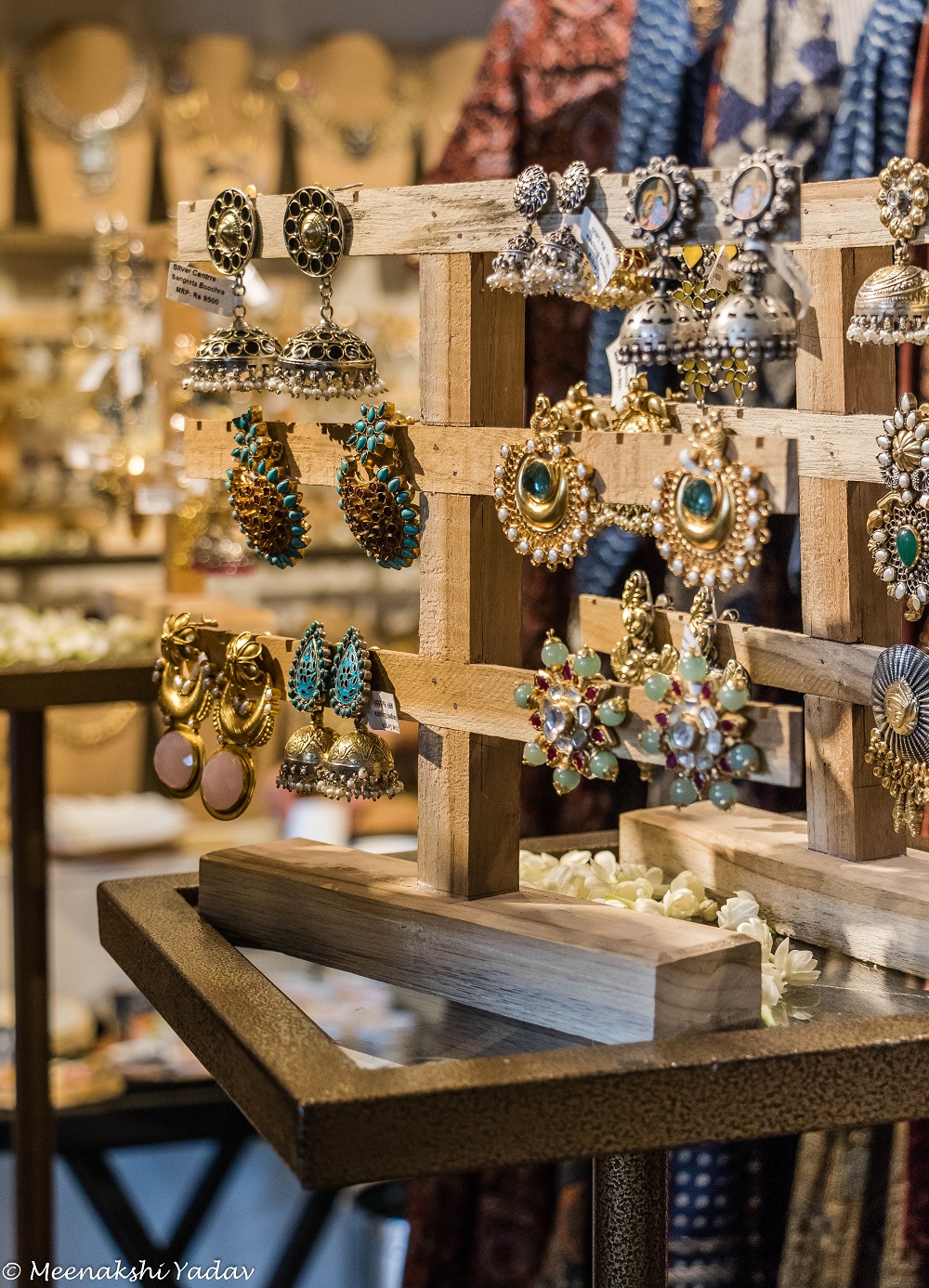
Who is your core customer and how do you engage them?
Our core consumer is in the range of 35 to 65-year women. From party goers and socialites to housewives, we cater to all through our wide range of designs. In general, anyone who loves the cultural heritage of India is our customer.
Coming to the second part of the question, today women like to see themselves wearing jewellery just like celebrities do. As we have built a strong network of celebrities who wear our designs, customers prefer our jewellery. Another factor is price sensitivity. We have products ranging from Rs. 1,500 rupees that goes up to Rs. 3 lakhs. So, we have something for everyone.
The third reason why our designs sell is their light-weight, pocket-friendly, contemporary make that attracts college-goers. Also, we have another clientele, which falls in the age group of above 35 and prefers gold-plated classic designs and original oxidised silver jewellery to go with their traditional outfits. Other than celebs, millennials or Gen Z buyers are influenced by bloggers but look for options in an affordable range. On their special requests, we do design such jewellery for the wearers of this age group.

What role does silver play in the bridal segment that is dominated by gold jewellery?
Today, a destination wedding is a trend. With that, families have become reluctant to travel with their real jewellery. So they look for replicas of gold jewellery. For example, they look for Kundan jewellery in silver. This has further boosted the demand for silver jewellery, especially the ones studded with precious and semi-precious gemstones.
At present what are your priorities for the brand?
We see that there is a lot of potential in India for silver jewellery, especially in that tier 2 and tier 3 cities. One of our major aims for now is to establish our presence in all the cities of India. So, we are looking forward to opening more stores in the future.


